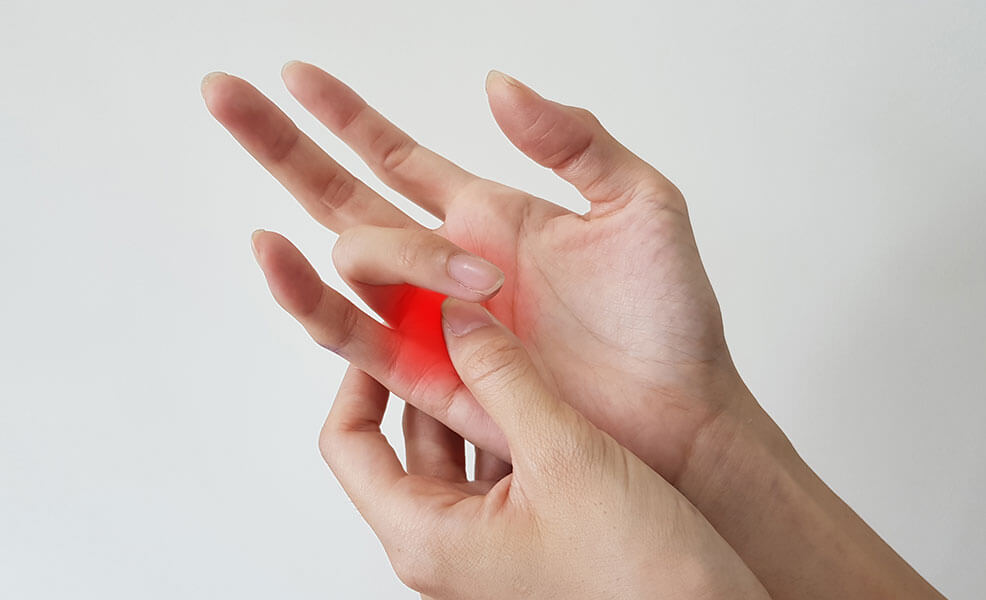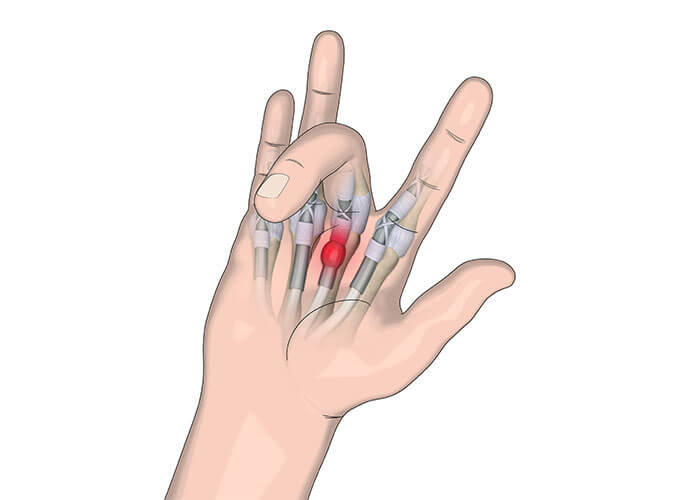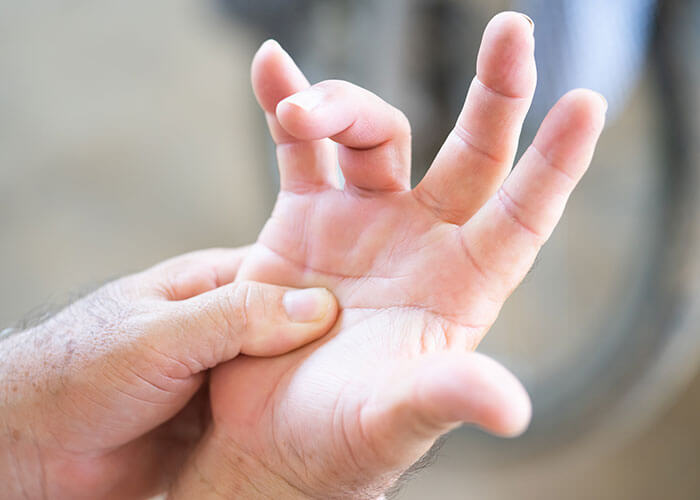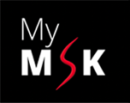
Is your finger locking or catching up when you are gripping something? And gets worse when you are working with your hands? You could be experiencing Trigger Finger.
Trigger finger, also termed Stenosing Tenosynovitis, is a condition in which a finger can get locked in a bent position. Often the ring finger is affected but in theory any of your fingers are susceptible to trigger finger. It can cause pain or a locking sensation when you try to bend or straighten the affected finger.
Let’s have a look at how this happens. Your fingers bend with the help of flexor tendons. Flexor tendons are a long cord-like structure that passes through a tunnel called the tendon sheath, connecting the flexor muscles of the forearm to the bones of your fingers. Each finger has two flexor tendons, and the thumb has one.
Alongside each tendon sheath there are a band of tissues called pulleys that help them attach to the bone. The tendons glide smoothly through the pulleys as you bend or flex your finger. When there is inflammation or swelling in the pulley, it narrows the space within the tendon sheath surrounding the tendon of the affected finger, making it harder for the tendon to pass freely through the pulley.

As a result, over time, the tendon swells and forms a bump (nodule) near the pulley. When you try to bend your finger, the swelling crams the pulley, causing a catching or locking sensation. This condition is called Trigger finger.
It occurs mainly in the A1 pulley— the pulley at the base of the finger. When it happens in the thumb, it is called Trigger thumb.
Symptoms of Trigger Finger
Trigger finger may cause symptoms ranging from mild discomfort to excruciating pain at the base of the fingers. The discomfort or pain flares up when you repeatedly use the affected finger.
The condition can also affect more than one finger at a time in the same hand or both hands. The most common symptoms are:
-
- A catching or popping sensation when you move your finger.
-
- Finger locked in a bent position.
-
- Difficulty and pain when you bend or straighten the finger.
-
- Stiffness or tenderness in the finger, especially in the morning.
-
- A lump in the palm at the base of the affected finger.
Causes of Trigger Finger
-
- Repeated injuries
-
- Forceful and repetitive hand gripping
-
- Diabetes
-
- Rheumatoid arthritis
-
- Gout
-
- Hypothyroidism
-
- Carpal tunnel syndrome
-
- De Quervain’s disease
-
- Amyloidosis
-
- Dupuytren’s contracture
Who’s at More Risk?
Trigger finger is more likely to affect if you are:
-
- Female: While trigger finger affects both men and women, it is more common in women.
-
- Involved in repeated gripping activities: Activities like gardening and clipping as well as various DIY work involve repeated gripping that can worsen symptoms.
-
- Age: Trigger finger affects more people as they start ageing. It is more common in the over 50’s
-
- Having a previous hand injury: Trigger finger is more likely to occur if you had a previous injury on your palm or finger.
Diagnosis of Trigger Finger
Diagnosing Trigger finger starts with your medical history and physical examination. It may not always require X-rays and scans. However, if your doctor suspects an underlying condition as arthritis, they may ask for imaging tests. Ultrasound scan especially performed dynamically (with the finger being bent and straightened under imaging, is often helpful.
Your doctor will diagnose a trigger finger by examining your hand and feeling your palm. They will ask you to open and close your hand to check for areas of pain, the trigger and the ease of movement. They will also look for any swelling or lump associated with trigger finger.

Treatment for Trigger Finger
The treatment for the trigger finger usually starts by resting your affected finger and avoiding hand movements and activities that trigger the symptoms. If resting does not improve your condition, your doctor will suggest any of the following treatments based on your symptoms.
Analgesics
Using medications such as paracetamol and nonsteroidal anti-inflammatory drugs (NSAIDs) helps relieve pain and inflammation from a trigger finger.
Cortisone Injection
Cortisone injections are an effective treatment for a trigger finger. It is proven effective in 50% to 70% of people who suffer from trigger finger conditions.
A cortisone injection for Trigger finger works by reducing the swelling under the tendon sheath and allowing the tendon to move freely within it. Your doctor will inject cortisone in the affected area in the relevant finger. It usually takes a few weeks for the inflammation or swelling to subside and regain easy movement.
Finger Splint
Wearing a splint helps reduce the pain by avoiding movement of the tendon. This is effective if you experience stiffness, particularly in the morning. Typically, you may be required to wear a splint for up to 6 weeks.
Stretching Exercises
Mild stretching exercises also help reduce stiffness and improve the mobility of the affected finger or thumb.
Osteopathic Care
Osteopathic treatment is a good way to treat Trigger finger. Depending upon the nature of your tendon damage and symptoms, a chiropractor will come up with a treatment plan that’s best for you.
To treat Trigger fingers, Osteopaths typically use two techniques called Active Release Technique (ART) and Graston therapy. It helps heal the soft tissue around the injury, improves the range of motion and reduces pain.
If you are going to consult a Osteopath rather than having a cortisone injection, we advise early assessment for more prompt healing.
It is a good idea to visit our Osteopath in Burnley or Manchester to be treated promptly to avoid the delays and get manual therapy or a cortisone injection so you can get on to your daily activities with minimal disruption
Surgery
In most cases, a trigger finger does not require surgery. However, if none of the above treatments works, your doctor will recommend surgery to treat the affected finger.
Your surgeon will make a small incision in the affected area of the tendon sheath to make it wider and allow more space for the tendon to move freely. This method is called open trigger finger release surgery. In case you have rheumatoid arthritis, a procedure called synovectomy is done.
Final Thoughts
Trigger finger is common and occurs mainly due to overuse of the affected finger. Though it usually gets better with resting, sometimes not seeking adequate treatment can lead to finger getting locked in the flexed position for prolonged periods of time.
This can have a serious impact on performing your daily activities of living.
Think you may have Trigger finger? Consult an Osteopath at one of our clinics in Burnley or Manchester if you notice any lump, tenderness, pain or locking sensation in your fingers.
FAQ
Why do I have a trigger finger suddenly?
You are vulnerable to trigger finger if you are likely to use repetitive hand and finger movements such as typing, gripping and other DIY work which places repeated stress on finger movements. You can prevent trigger finger by giving adequate rest to your hands and using appropriate tools if you can’t avoid these activities.
Is a trigger finger something to worry about?
Trigger finger is a common condition. Consult your doctor if you start experiencing pain, stiffness or a locking or catching sensation when you bend or flex your hand. Just bear in mind, if you don’t treat it in the starting stage, it may become permanent and affect your daily activities.
Is trigger finger curable without surgery?
Trigger finger is curable without surgery, and in most cases, the inflammation in the tendon heals naturally with rest and proper care. However, in severe cases, the finger may become permanently locked in a flexed position and require surgery to correct it.
Is Osteopathic effective in treating trigger fingers?
Osteopathic treatment is an effective natural way of treating Trigger finger. Chiropractic techniques such as the Active Release Technique and Graston Technique are found to be very effective in treating trigger fingers especially in the early stages
How long does it take to heal the trigger finger?
The symptoms will only start easing after you give enough rest to your hands. Moderate symptoms can take anywhere between 6 to 10 weeks for the inflamed area of the tendons to heal and gain full mobility.
Where can I get Help for trigger finger in Manchester?
MyMSK Clinic has a location in Deansgate, Manchester. Our experienced clinician first procedes with a thorough examination. Once a personalised treatment plan is decided the clinician carries will inject the area under ultrasound Image Guidance (This ensures the injection is as accurate as possible).
To book a consultation with us please visit our Booking Page or simply call us at 0333 772 9655.




